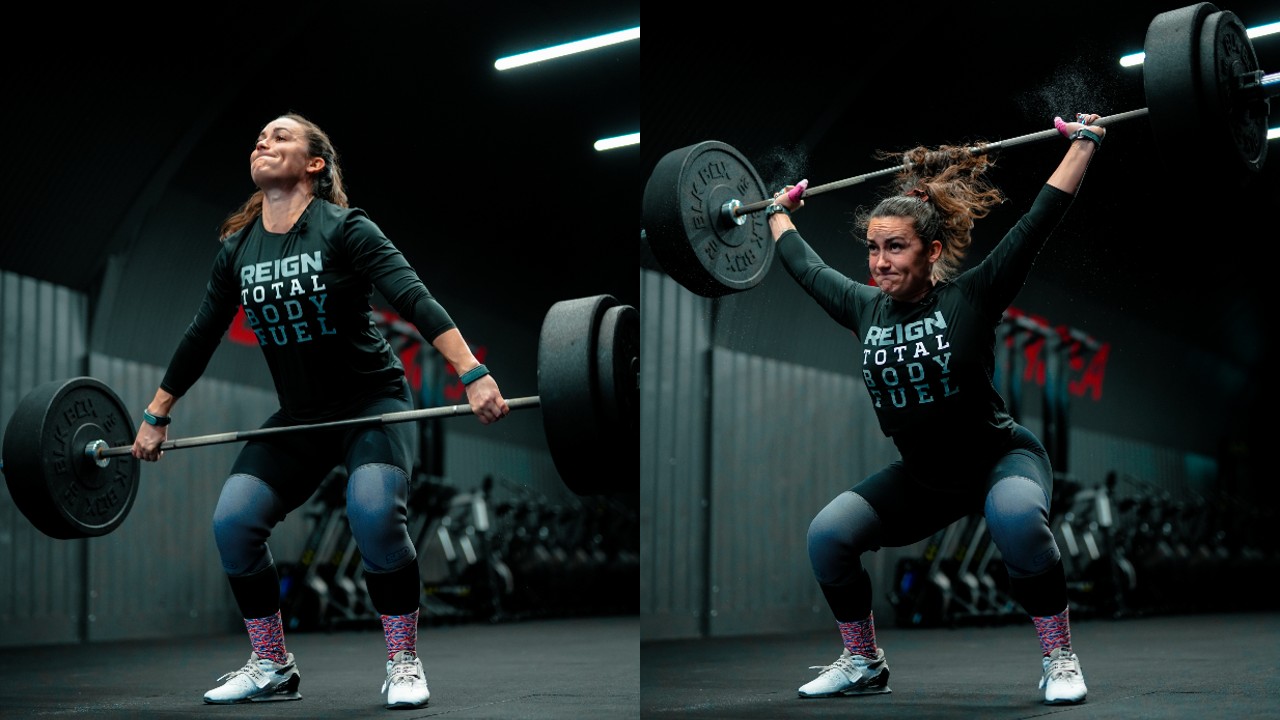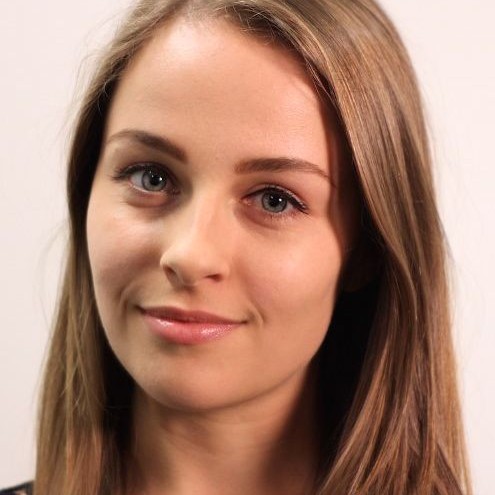Can Lifting Weights Be Empowering? I Trained With An Olympic Weightlifter To Find Out
Sarah Davies illuminated the relationship between weightlifting and empowerment ahead of International Women’s Day

When I first started working out at university over 10 years ago, I felt very intimidated by the weights section of the gym. Thankfully, times have changed. There are now far more female athletes providing inspiration, plus a greater awareness of the benefits of strength training for women in particular. There’s nothing more empowering than feeling capable, and weight training is a great way to build strength and confidence.
Ahead of International Women’s Day, Coach was invited to take part in an all-female weightlifting session, hosted by Reign Total Body Fuel and led by British Olympic weightlifter Sarah Davies. Davies recently won gold at the 2022 Commonwealth Games, and currently holds the British record for both the snatch and the clean and jerk. She also won silver in the women’s 71kg event at the 2021 World Weightlifting Championships.
I hold no weightlifting medals – in fact I am a complete beginner. I love to swim, cycle, practise yoga and go on long hikes, and I regularly use the weight machines at my gym, but my experience with a barbell is non-existent. So when I was offered the chance to train with Davies I was excited but, to be honest, a bit nervous.
When I arrive at the class, my first observation is the wide range of ability and experience , from those who have been lifting several times a week for a few years, to me, a complete beginner.
We start off with a quick warm-up, then it’s time to set up our barbell areas. Since I’m new to this, Davies recommends I start with a technique bar, which is smaller and lighter than a traditional barbell. This allows me to work on my form with less risk of injury.

“People overcomplicate weightlifting, but when you can make it really simple, that’s when the magic happens,” Davies says. “Don’t worry about the weight for the time being. Focus on the position of your body.”
Davies demonstrates the correct starting position for the clean and jerk – hands a thumb-length into the hand grip area, feet hip-width apart and turned slightly out, head up – and then demonstrates the movement that we’re aiming for.
Sign up for workout ideas, training advice, reviews of the latest gear and more.
“Don’t overthink it,” Davies says. “It’s supposed to be a fast movement, so once you’ve got the technique down and you’re in the starting position, just let it happen. You can always go again.”
To be able to test your body to its full limits and to know what you’re capable of is incredibly empowering
My first attempt is fairly unco-ordinated, but I’m given encouragement and helpful tips from those around me. You can learn a lot from watching others practise and get coached, and the class itself is refreshingly unfussy, with everyone lifting different weights at different times. Davies encourages us to trust our judgement. “You’ll know what the right weight is,” she says.
As a first-timer, I soon learn that it’s small shifts, such as keeping your eyes up, and positioning your head and neck correctly, that make the biggest difference. My initial instinct is to look down at the bar, but I can really feel how much better my muscles engage when I look straight ahead.
“Your legs are the largest muscle group,” Davies says, showing me how to shift into the best position and explaining that your centre of balance needs to be in the toes to drive you up. “The momentum will all come from your legs.” This is also apparent several days later when I am wincing every time I have to walk up or down the stairs.
After finishing the session, we do a few final stretches, then Davies takes questions. First up, what does she do other than weight training? “I don’t do very much cardio,” Davies says. “It’s surprising the cardio benefit that you get from strength training exercises such as squats.”
Another participant asks if there’s anything specific that she says in her head when she lifts. “Not that I can say out loud now!” she laughs. “There’s not really a lot going through my head when I step up to the bar. Once you’re there, you have to trust that you’ve put in the reps, and it will happen.”
Her proudest moment? “Getting a World [championships] medal,” Davies says. “I went with the goal to have fun, and it really showed me that when you don’t put too much pressure on yourself, often you actually do better.”

Davies also talks about the relationship between powerlifting and empowerment. “It’s about being able to test your body,” she says. “Traditionally women have been told that female bodies aren’t as strong, and yes, we don’t have exactly the same hormones as men, but to be able to test your body to its full limits and to know what you’re capable of is incredibly empowering. To have that possibility to see where your body can go is awesome.”
For women interested in trying powerlifting, Davies recommends seeking out the right training environment. “Find yourself a good gym and a good coach, and surround yourself with people who are going to make you feel comfortable in that setting,” she says. “There are a lot of things that people worry about going into a weights gym, but if you find the right one they’re actually really friendly places. There’s often a strong community there, so if you walk in and you’re new, people will be happy to help you.”
Based on my experience – the supportive atmosphere, positive energy, and a group of amazing women to learn from – what Davies says rings true, and barbell training is something I’ll definitely be looking to try again in the future.
“The number of women getting into strength training in general is really positive,” says Davies. “It has so many health benefits for us when it comes to bone density among so many other things. Why wouldn’t you want to do it?”

Sarah is an experienced health, fitness, nutrition and beauty writer, and was previously health editor at BBC Good Food. She has contributed reviews, interviews and features to Coach since 2019, covering exercise bikes, fitness trackers and apps, among other topics. In her free time, she can be found hiking, swimming, cycling or trying (and failing) to do a headstand on a yoga mat.
